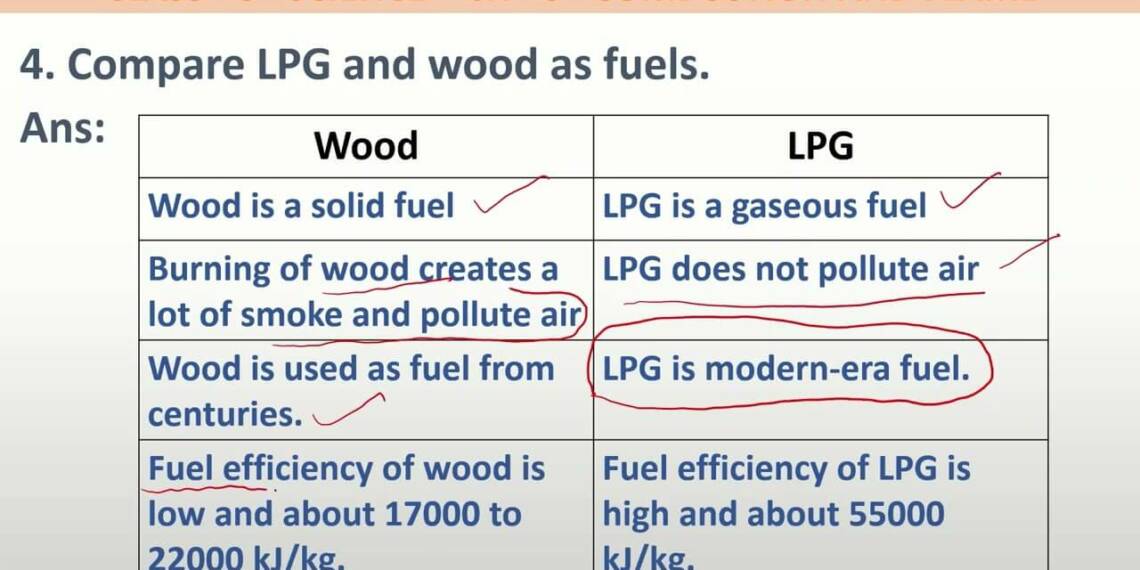Compare LPG and Wood as Fuels: 7 Major Differences
Considering the pros and cons of using wood or LPG as fuel? Compare this side-by-side LPG and Wood as Fuels to learn more about the benefits and drawbacks of each, and determine which might work best for your energy requirements and environmental concerns.
Compare LPG and Wood as Fuels
Imagine that there are two fighters in the ring: wood and LPG. Even though they both exude charisma, there are some important distinctions between them that you should be aware of.
Let’s start our Compare LPG and Wood as Fuels by discussing convenience. LPG is comparable to a dependable, quick driver who is always willing to take you where you need to go. Simply turn a knob, and it works! Quick flame. Not a fuss or a bother. Wood, on the other hand, is like that old friend who takes a little while to warm up. You just need to set it up, wait for it to catch fire, and perhaps gently coax it with some kindling. Not the most practical in an emergency.
Now, LPG clearly prevails in terms of cleanliness. It resembles the tidy freak who never makes a mess. Only a small amount of carbon dioxide and water vapor remain after burning it. Not ash, not soot, not residue. Wood is, well, a little messier. It leaves you with ash to clean up, and if you’re not careful, everything in your immediate vicinity may get covered in soot.
Now let’s discuss the environment. Like that friend who is really into lowering their carbon footprint, LPG is environmentally conscious. It emits fewer greenhouse gases during burning, resulting in a cleaner burn and reduced air pollution. Conversely, Wood has a tendency to cause some trouble. It increases particulate matter emissions and worsens air pollution, particularly in areas with high population density.
Compared to wood, LPG requires far less room for storage. Those slim, elegant gas cylinders are nearly impossible to store someplace. Wood, you’ll need a fair amount of room to store supplies. Remember that it needs to be kept dry as well, or else it will be a soggy mess that serves no purpose.
Although LPG may seem more expensive at first, it is ultimately more cost-effective. It’s also very accessible. Even though wood might appear less expensive at first, if you use it frequently, it can become quite expensive. It can be difficult to locate wood of high quality, particularly in cities.
Also Read: Expansion Of Idea: Unveiling Wisdom with Essay
Let’s now discuss adaptability. Similar to a multipurpose tool, LPG can be used for heating, cooking, and even powering certain appliances. Wood is mostly suitable for use in wood stoves and fireplaces. Not very adaptable that.
Finally, security. When used properly, LPG is comparatively safer to handle and has fewer accident risks. On the other hand, if you’re not careful, wood can present some fire hazards. In addition, the possibility of creosote accumulation in the chimney, which can result in chimney fires, never goes away. Thus, be alert for that.
Ultimately, there are benefits and drawbacks to both wood and LPG. Everything is contingent upon your needs, your financial situation, and your level of effort.
This is a short introductory article for students of class 5-8 and we hope students can add more info when they appear for exams. Please let us know in comment box what do you think about this answer.








